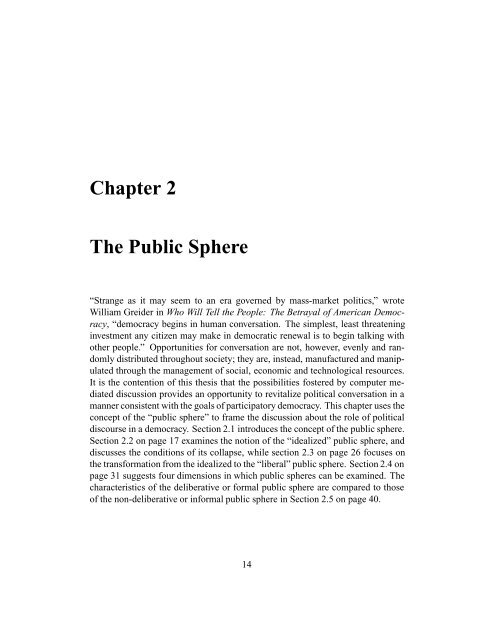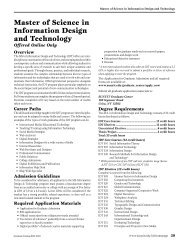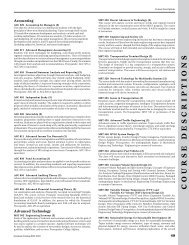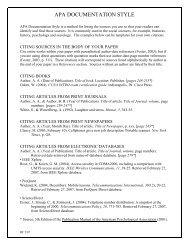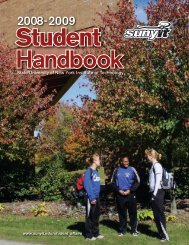Expanding the Public Sphere through Computer ... - ResearchGate
Expanding the Public Sphere through Computer ... - ResearchGate
Expanding the Public Sphere through Computer ... - ResearchGate
You also want an ePaper? Increase the reach of your titles
YUMPU automatically turns print PDFs into web optimized ePapers that Google loves.
Chapter 2<br />
The <strong>Public</strong> <strong>Sphere</strong><br />
“Strange as it may seem to an era governed by mass-market politics,” wrote<br />
William Greider in Who Will Tell <strong>the</strong> People: The Betrayal of American Democracy,<br />
“democracy begins in human conversation. The simplest, least threatening<br />
investment any citizen may make in democratic renewal is to begin talking with<br />
o<strong>the</strong>r people.” Opportunities for conversation are not, however, evenly and randomly<br />
distributed <strong>through</strong>out society; <strong>the</strong>y are, instead, manufactured and manipulated<br />
<strong>through</strong> <strong>the</strong> management of social, economic and technological resources.<br />
It is <strong>the</strong> contention of this <strong>the</strong>sis that <strong>the</strong> possibilities fostered by computer mediated<br />
discussion provides an opportunity to revitalize political conversation in a<br />
manner consistent with <strong>the</strong> goals of participatory democracy. This chapter uses <strong>the</strong><br />
concept of <strong>the</strong> “public sphere” to frame <strong>the</strong> discussion about <strong>the</strong> role of political<br />
discourse in a democracy. Section 2.1 introduces <strong>the</strong> concept of <strong>the</strong> public sphere.<br />
Section 2.2 on page 17 examines <strong>the</strong> notion of <strong>the</strong> “idealized” public sphere, and<br />
discusses <strong>the</strong> conditions of its collapse, while section 2.3 on page 26 focuses on<br />
<strong>the</strong> transformation from <strong>the</strong> idealized to <strong>the</strong> “liberal” public sphere. Section 2.4 on<br />
page 31 suggests four dimensions in which public spheres can be examined. The<br />
characteristics of <strong>the</strong> deliberative or formal public sphere are compared to those<br />
of <strong>the</strong> non-deliberative or informal public sphere in Section 2.5 on page 40.<br />
14


